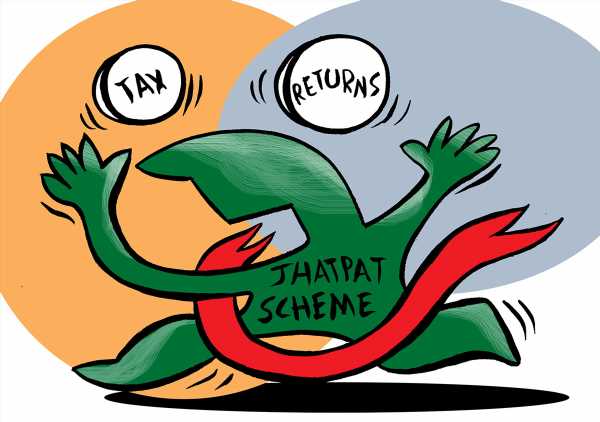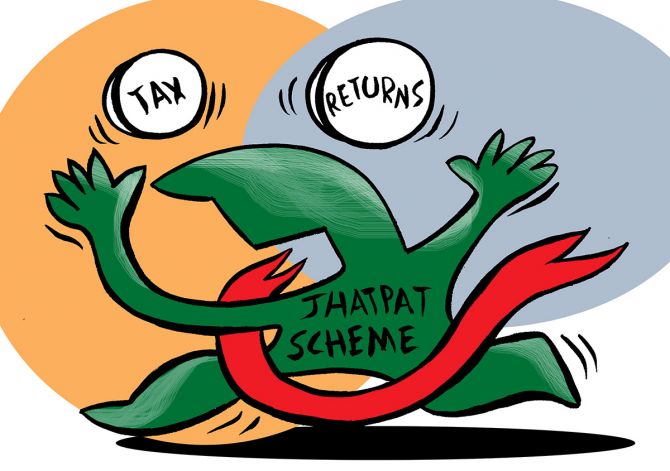If a salaried employee does not possess Form 16, he can still file the I-T Return with the help of his salary slips and Form 26 AS.
The last date to file your income tax return (ITR) for financial year 2020-21 has been extended till September 30, 2021.
Keeping in mind the Covid-19 situation, the tax department has extended a few deadlines.
For instance, as per the Income Tax Act, employers should issue Form-16 to the employee before June 15 of the assessment year — the 12-month period that follows the financial year for which your income is to be assessed for tax.
For FY21, CBDT has extended the due date to issue Form 16.
The new deadline for employers to issue Form 16 to employees is July 31, 2021.
Chartered Accountant Rahul Agarwala, business partner, AGSM Advisory Private Ltd, says, “Form 16 is a certificate issued by an employer to its employee under section 203 of the Income Tax Act, when the employer deducts tax at source (TDS) from the salary of employee.”
This certificate provides details about the salary an employee has earned during the financial year and the amount of TDS that has been deducted on his/her pay and deposited to the Income Tax Department.
Agarwala says, “It is mandatory for employer to issue Form 16, if tax at source has been deducted from the employee’s salary.
“Further, in case an employee has changed jobs or worked for two or more employers at the same time during the year and the tax has been deducted by more than one employer, then employee will be issued separate Form 16s by those employers.”
Form 16 has two components, namely, Part A and Part B.
Part A: Archit Gupta, chief executive officer, (CEO) Cleartax says, “Part A of Form 16 provides details of the tax every quarter and deposited in the government’s treasury.
“It will also have details of the permanent account number (PAN), tax deduction account number (TAN) of the employer, and other information.”
The employer can generate and download Part A of Form 16 through the TRACES portal.
Components of Part A of Form 16 include the name and address of the employer, PAN, TAN and summary of quarterly tax deducted and deposited, duly certified by the employer.
Part B: It consists details about other income, deductions allowed, salary paid, tax payable etc.
Agarwala says, “Part B of Form 16 has the detailed break-up of tax computation, gross salary paid/credited, exemption/deduction claimed, any other income declared by employee etc as an annexure to Part A of Form 16.
“In short, it’s safe to say it is the detailed computation of tax on income of salaried employees.”
Don’t confuse Form 16 with Form 16 A: Form 16A is also a TDS Certificate.
While Form 16 is for only salary income, Form 16A is applicable for TDS on income other than salary.
For example, Form 16A shall be issued to you for tax deducted by a bank on the interest you’ve earned on fixed deposits, TDS on insurance commission, TDS on your rent receipts.
In other words, it includes TDS on any income — other than salary — that is liable for such deduction.
All details in Form 16A are also available on Form 26AS.
What to do: Ideally, you should have got your Form 16 from your employer by now.
If you haven’t yet, then you should get it by July 31, the new deadline.
What do you do if you have changed or lost your job, or if your company has shut down?
Even if you don’t have Form 16, you can still file returns.
Suresh Surana, founder, RSM India says, “If a salaried employee does not possess Form 16, he can still file the I-T Return with the help of his salary slips and Form 26 AS.”
Salary slips will help an assessee ascertain his income from salary for the relevant tax year and also the details of profession tax, income tax and other deductions such as contributions towards Provident fund.
It also contains details of allowances forming part of salary, which would help a taxpayer to ascertain whether the allowances are exempt or taxable.
Surana says, “Form 26AS is a statement of TDS/TCS which will help an assessee determine the amount of TDS/TCS as well as the amount of advance tax and self-assessment tax for that financial year.”
Apart from those mentioned above, an assessee should take into consideration the incomes from other sources (such as rental income, interest income, dividends, etc.) and capital gains that have accrued during the relevant tax year while computing the total income.
If an assessee is in receipt of House Rent Allowance (HRA), he should calculate the amount of exemption under Section 10(13A), if eligible.
He should also consider standard deduction (up to Rs 50,000) on gross salary and deductions under chapter VI A such as section 80C.
Surana says, “However, if the taxpayer opts for the new tax regime which provides for a lower tax rate, then he should note that he shall not be able to claim any tax deductions or exemptions as discussed.”
What if there is no TDS? Is the employer required to issue a Form 16?
Manish P Hingar, founder, Fintoo, a tax and investment advisory firm, says, “If no tax has been deducted, the employer needn’t issue Form 16.
“However, the employee can request the employer to issue Form 16 Part B, which will help him to file returns.”
And what should you do when the employer deducts TDS and does not issue a certificate?
Surana says, “If the employer deducts TDS and does not issue a certificate under Form 16 within the prescribed time limit, he shall be liable to pay penalty of Rs 100 per day under section 272A(2)(g) of the IT Act, till the certificate is issued to the employee.”
And what if no Form 16 has been issued to you by the company, because it has shut down?
Does it mean you don’t have to pay tax or file a return?
As per Section 139(1), if an individual’s total income in a particular tax period exceeds the basic exemption limit of Rs 2.5 lakh, he shall file the return of income, regardless of whether or not Form 16 has been issued or not.
Thus, even if Form 16 has not been issued to an assessee by his employer, the employee will still have to file his return of income.
Hingar says, “Not issuing Form 16 does not mean that you do not have to pay any taxes or file your tax return.
“It is important for everyone to pay income tax and file tax returns based on their income.
“And if you do not have Form 16, you can use your salary slips, bank statements and Form 26AS to file your Income Tax Returns.”
Source: Read Full Article


